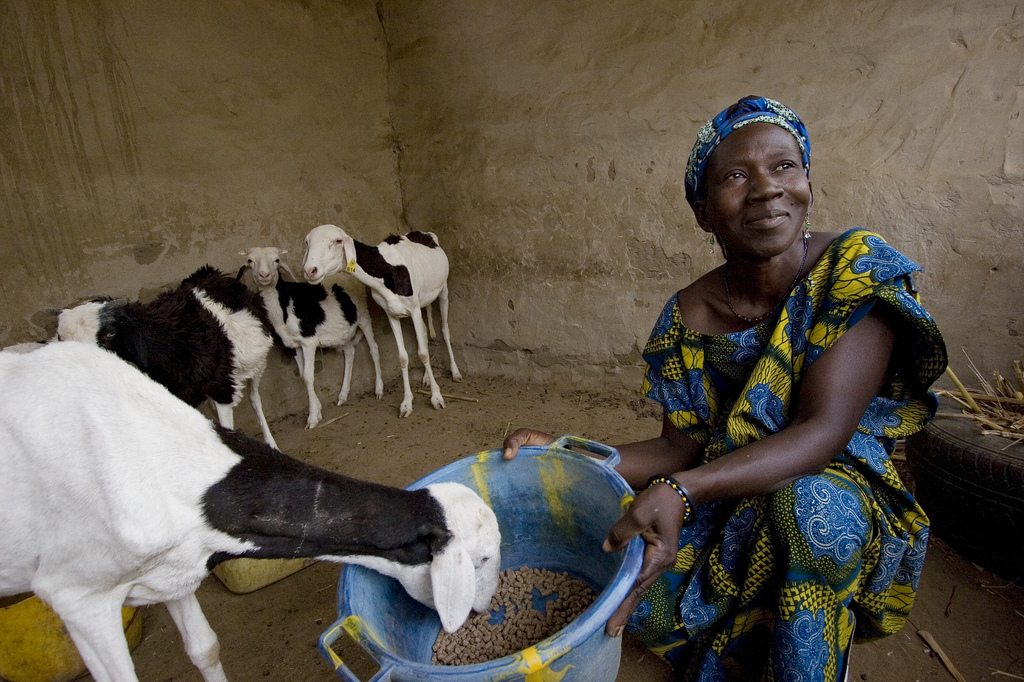Near the end of a two-minute video on Heifer International’s website, there is a striking series of words and images that encapsulate the philosophy and approach of the 70-year old nonprofit devoted to ending hunger and poverty. In between cards bearing the phrases “When I take your hand,” “It’s not for a handout,” “It’s so we can walk together,” viewers see the face of a laughing and smiling woman standing in an African village, and a more subdued, yet clearly pleased Ecuadorian fisherman.
It’s impossible to see these images – along with those that precede them featuring people throughout the developing world tending crops, feeding livestock and celebrating – without getting a visceral feeling that you’re witnessing real and meaningful change. That’s intentional. Indeed, the video, called “Power Over Poverty,” dominates Heifer’s homepage and underscores just how important visual storytelling is to the organization’s overall marketing efforts, which are aimed at encouraging individual and institutional donors to support its work across the globe.
“The marketing is focused on engaging people and inviting them to participate in the journey of learn, act and give,” says Cindy Jones-Nyland, Heifer’s chief marketing officer. “We believe the more you know and understand our mission, the more willing and able and inspired you are to take action to make change.”
Visual Storytelling Through a Brand Lens
To Jones-Nyland, the vast majority of Heifer’s marketing materials – be it videos, blogs, direct mail or the print magazine, World Ark – are produced to strike a balance between “the head and the heart.” And nothing, she says, rivals the power of visual storytelling when it comes to touching a current or prospective donor’s heart and motivating them to financially support Heifer’s programs. “When you look at a picture of a family beaming with pride and working as an active participant in creating change, it touches someone in a more emotional way than just reading about it,” she says. “Visuals emotionally engage and touch people.”
Nothing rivals the power of visual storytelling when it comes to touching a current or prospective donor’s heart.
But Jones-Nyland and her team must ask themselves some important, and not entirely intuitive, questions when they’re considering how to best employ visual storytelling. In short, before any video or photos are shot and used in a blog or direct mail piece, Heifer has to be certain that the imagery aligns with the organization’s brand.
Heifer’s brand is all about the idea that people – both donors and those who receive assistance – are connected and actively involved in addressing the global challenge of hunger and poverty. After all, Heifer is perhaps best known for its approach of providing families in the developing world with livestock (cows, sheep, goats); the animals can then be used to start agricultural enterprises that have profound benefits. For instance, a cow provided to a family in Rwanda can translate into better health and nutrition for the family itself, and also allow it to sell milk and earn more income.
Dignity, Not Sympathy
Heifer’s brand, then, dictates that its visual storytelling not about be aimed at evoking sympathy among donors. In other words, you won’t see a lot of glum faces when you look at Heifer’s marketing materials. “We go out and capture video or photography in participant communities that focuses on dignity, joy, passion, self-reliance and a positive, personal desire people have to better their circumstance,” says Jones-Nyland. “We try hard not to make things seem desperate.” Choosing imagery of people feeding their goats or cows not only emphasizes the message that donations trigger tangible action, it also fosters a stronger connection between those who give and those who receive assistance.
Having this strong philosophy and brand “provides some discipline to our content strategy,” says Jones-Nyland. For example, in order to compile the video and photography it uses in its marketing materials, Jones-Nyland sends staffers and freelancers to the communities where Heifer works. Before these trips to often-remote villages in Africa, Asia, and South America, Jones-Nyland and her colleagues are methodical about planning and communicating what visuals they need from the field.
Part of that conversation is being clear about the platforms where the visuals will eventually live – be it in direct or email marketing pieces, on the website or in marketing outreach to high net worth donors. “That orchestration is important,” says Jones-Nyland. “Everything is reinforced and focused on the messages you’re trying to articulate.”
Jones-Nyland understands that while the aim of Heifer’s marketing is different from that of a for-profit business, visual storytelling can be just as effective in a corporate setting. It just requires a clear brand understanding and content discipline. “The motivation might be different,” she says. “But a CMO of a for-profit has to do the same things.



